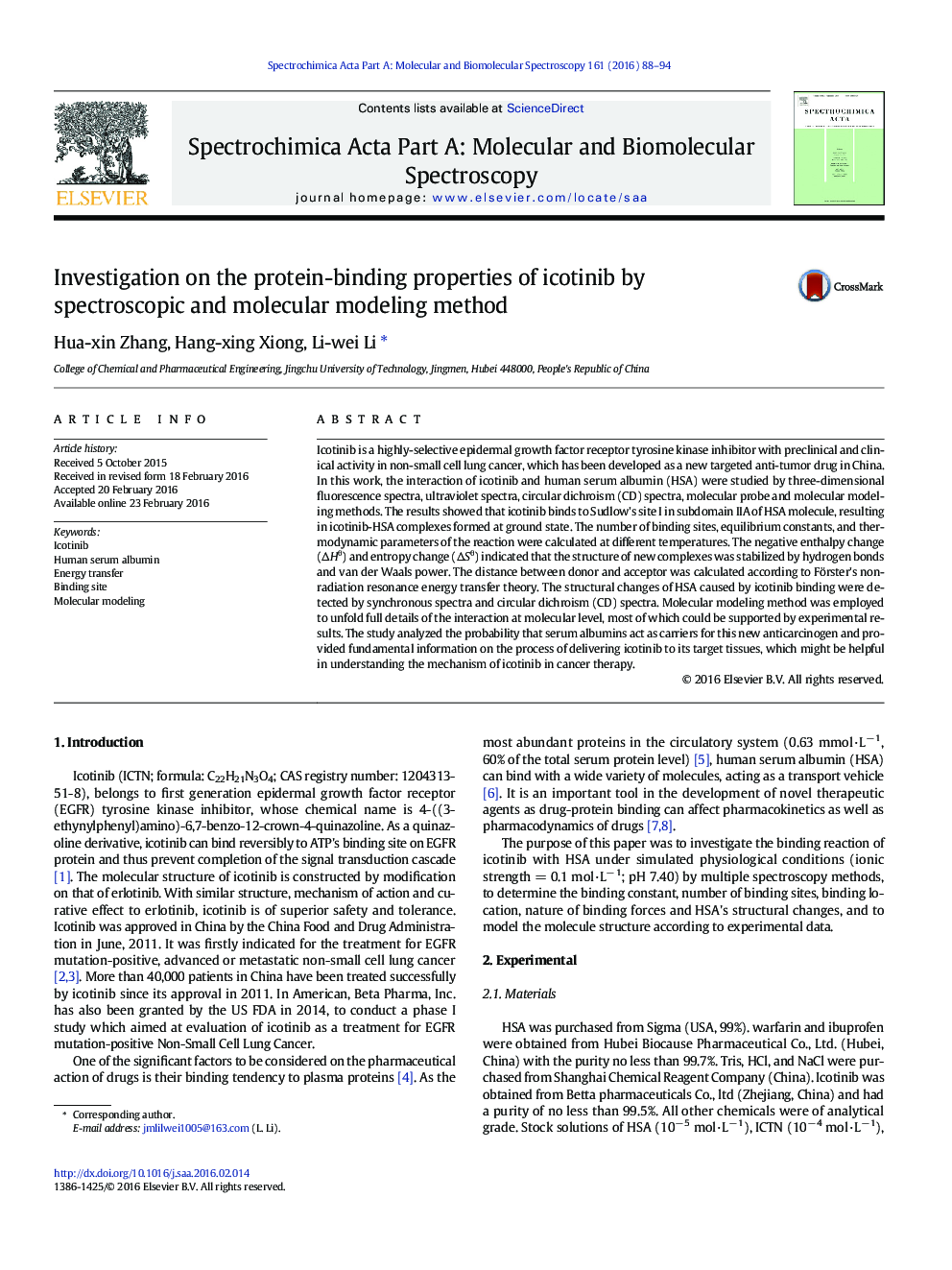| Article ID | Journal | Published Year | Pages | File Type |
|---|---|---|---|---|
| 1228852 | Spectrochimica Acta Part A: Molecular and Biomolecular Spectroscopy | 2016 | 7 Pages |
•One binding site with high affinity has formed between ICTN and HSA molecules.•The binding site locates in sub-domain IIA (Sudlow's site I) of HSA molecule.•Hydrogen bonds play the major role in maintaining structure of ICTN–HSA complex.•The binding results in a reduction of the α-helix content.•The interaction is a spontaneous as well as exothermic process.
Icotinib is a highly-selective epidermal growth factor receptor tyrosine kinase inhibitor with preclinical and clinical activity in non-small cell lung cancer, which has been developed as a new targeted anti-tumor drug in China. In this work, the interaction of icotinib and human serum albumin (HSA) were studied by three-dimensional fluorescence spectra, ultraviolet spectra, circular dichroism (CD) spectra, molecular probe and molecular modeling methods. The results showed that icotinib binds to Sudlow's site I in subdomain IIA of HSA molecule, resulting in icotinib-HSA complexes formed at ground state. The number of binding sites, equilibrium constants, and thermodynamic parameters of the reaction were calculated at different temperatures. The negative enthalpy change (ΔHθ) and entropy change (ΔSθ) indicated that the structure of new complexes was stabilized by hydrogen bonds and van der Waals power. The distance between donor and acceptor was calculated according to Förster's non-radiation resonance energy transfer theory. The structural changes of HSA caused by icotinib binding were detected by synchronous spectra and circular dichroism (CD) spectra. Molecular modeling method was employed to unfold full details of the interaction at molecular level, most of which could be supported by experimental results. The study analyzed the probability that serum albumins act as carriers for this new anticarcinogen and provided fundamental information on the process of delivering icotinib to its target tissues, which might be helpful in understanding the mechanism of icotinib in cancer therapy.
Graphical abstractWhen warfarin was added to HSA and bond in Sudlow's site I, the emission intensity of warfarin significantly enhanced (blue curve), which may due to the enlargement of its absorption area as HSA had restricted its degree of freedom. Then, ICTN added to HSA–warfarin system, the emission spectrum promptly decreased in intensity (red curve), showing a tendency to the spectrum of warfarin only. This indicated that ICTN had competed with warfarin for Sudlow's site I in subdomains IIA of HSA, and warfarin might had been partially replaced by ICTN.Figure optionsDownload full-size imageDownload as PowerPoint slide
